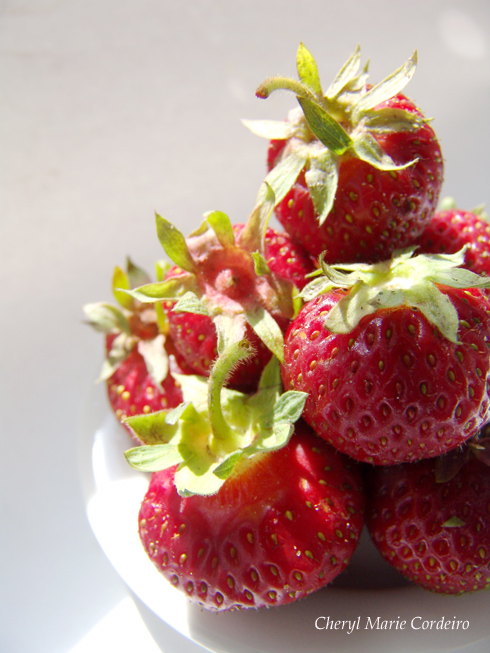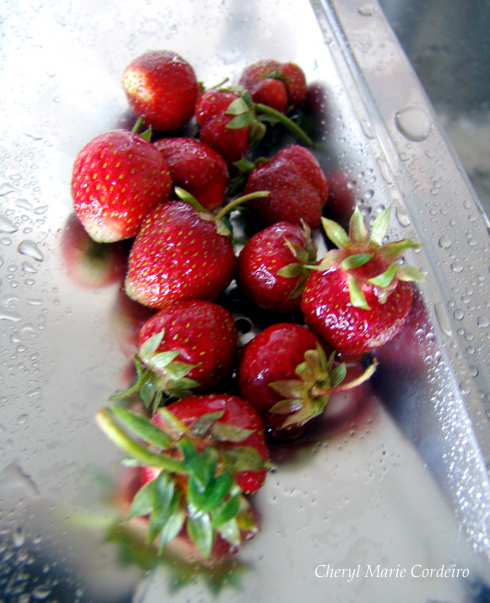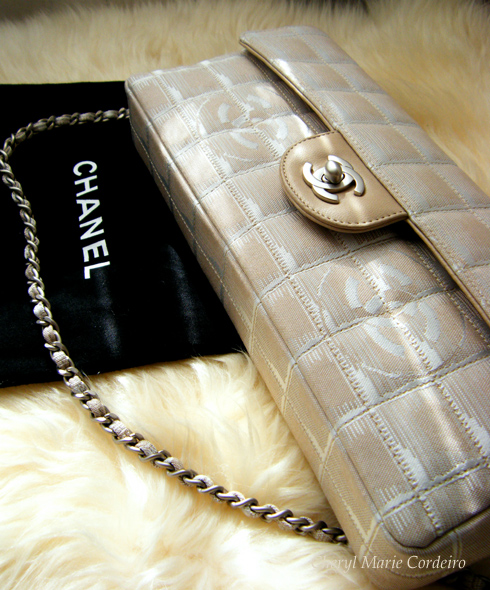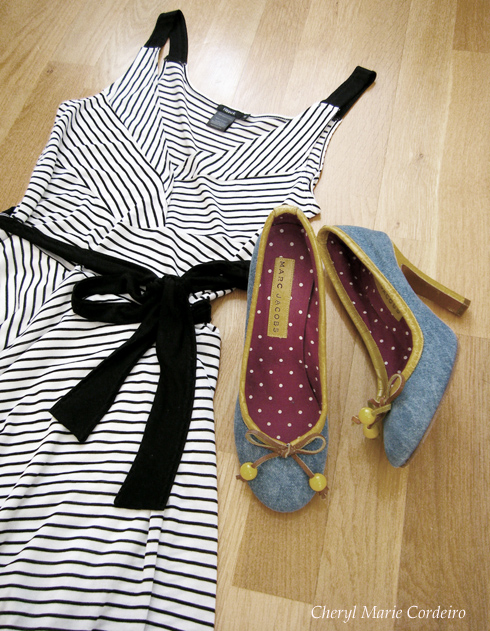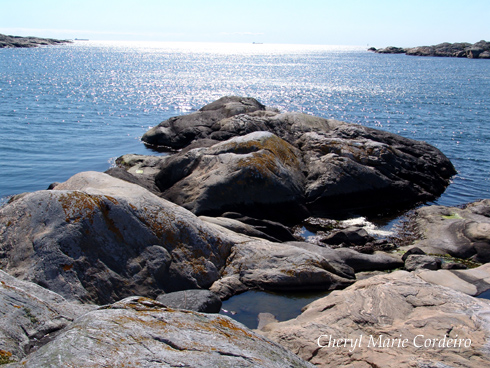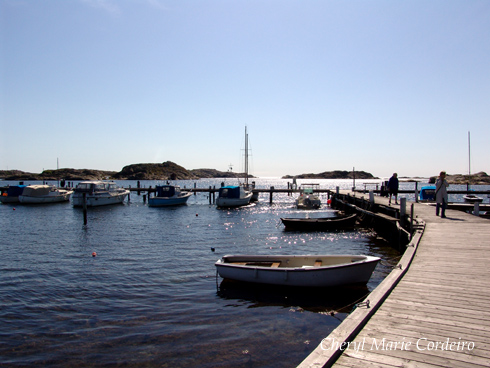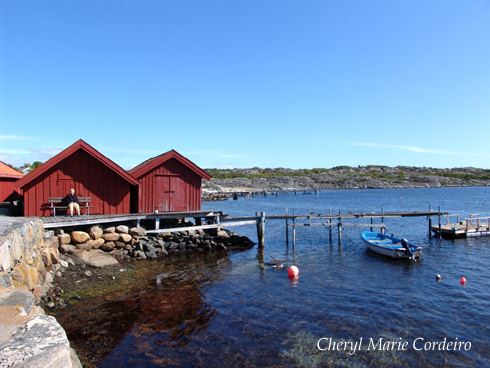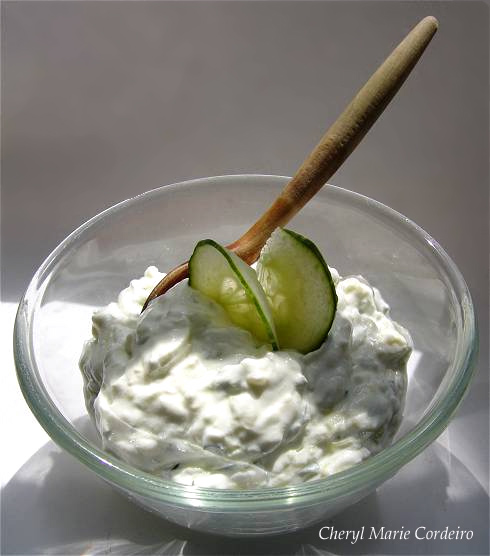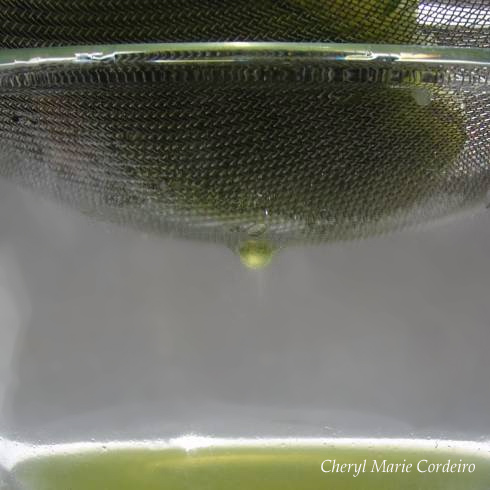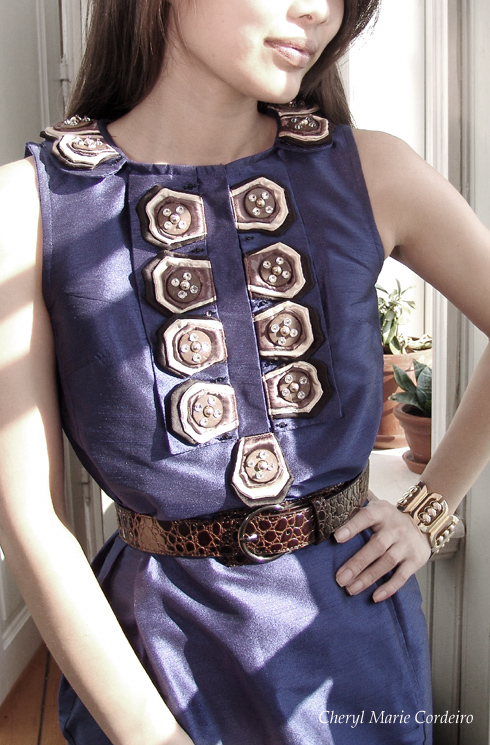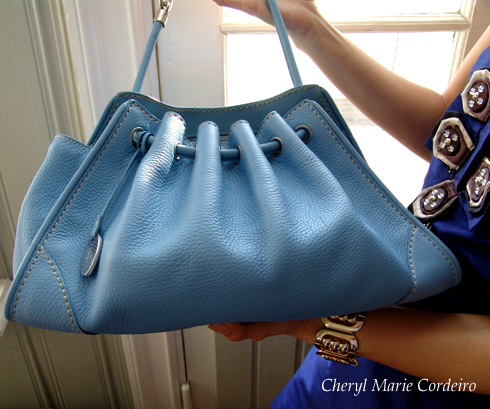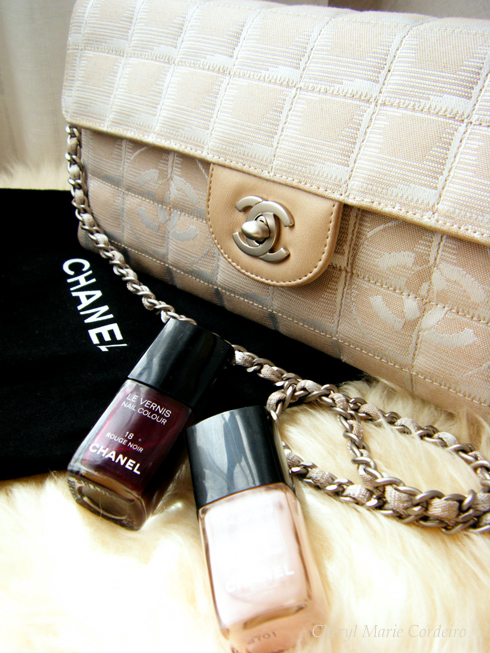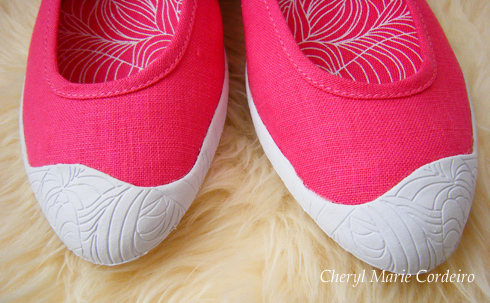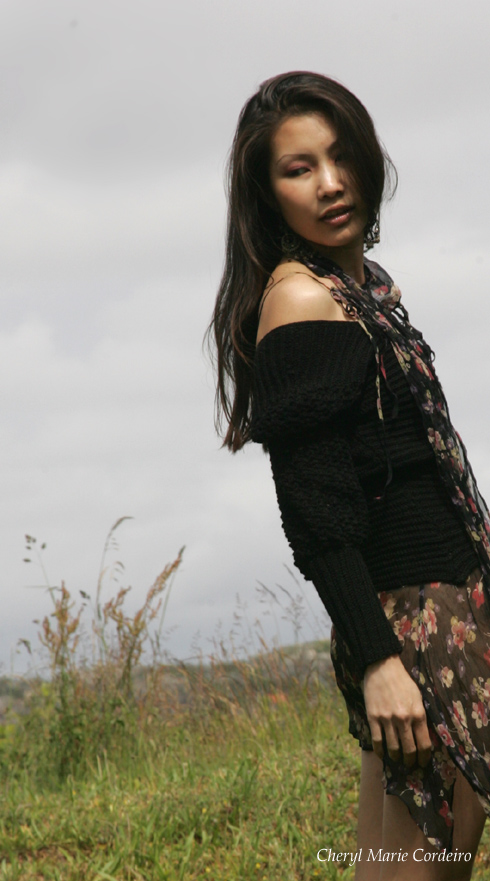
Hand crocheted black sweater made by Rita Cordeiro and silk tunic dress by Karen Millen.
Photo © Jan-Erik Nilsson for CMC 2009
Not wanting to give false hopes for Midsummer in Sweden, the newspapers had, about two to three weeks ago, already begun forecasting a grey and soggy Midsummer for the west coast of Sweden.
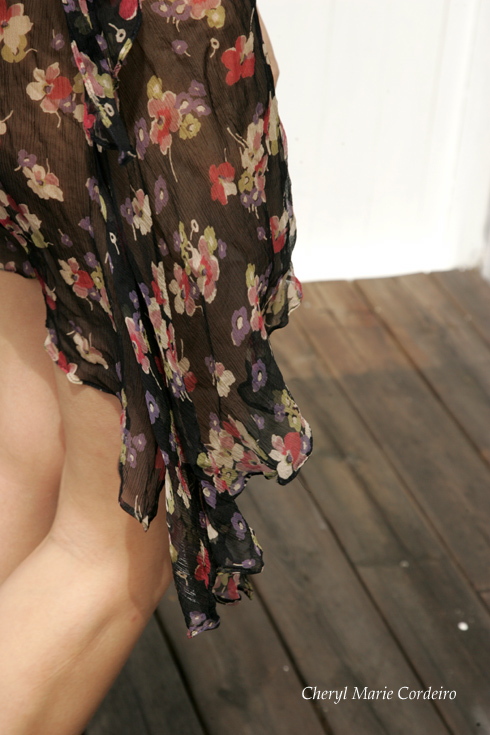
Floral print on black, ending in an asymmetrical hem.
Well, the day proved their forecasts accurate with some strange oscillations between sunshine and rain.
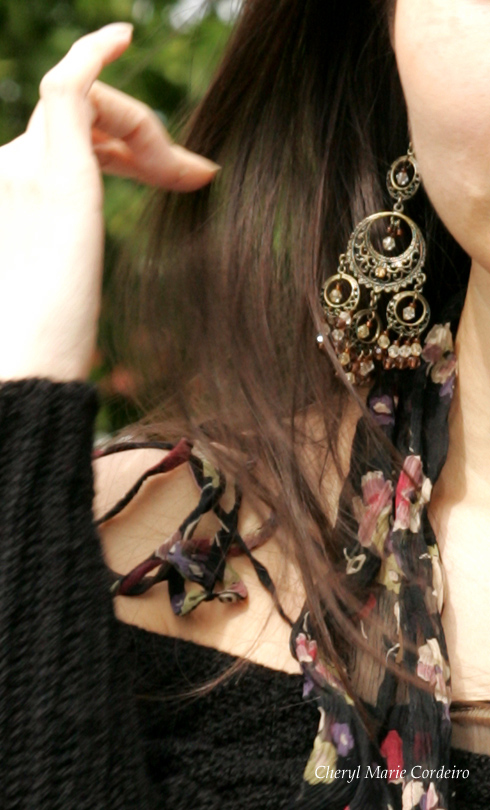
Boho bronze beaded chandelier earrings.
But regardless of weather conditions, it’s heartening to know that you’ll always find some die-hard Midsummer fans who’ll spread the festive cheer by setting up the Midsummer pole. I’ve seen how this is done and it’s no task for the faint hearted. The pole is decorated with flowers and blue and yellow streamers that trail beautifully in the wind. The hoisting of the pole and securing it into the ground takes nothing less than cooperative, physical strength. Then comes the sight of little children running around the grounds and that is enough to bring a smile on just about anyone’s face.
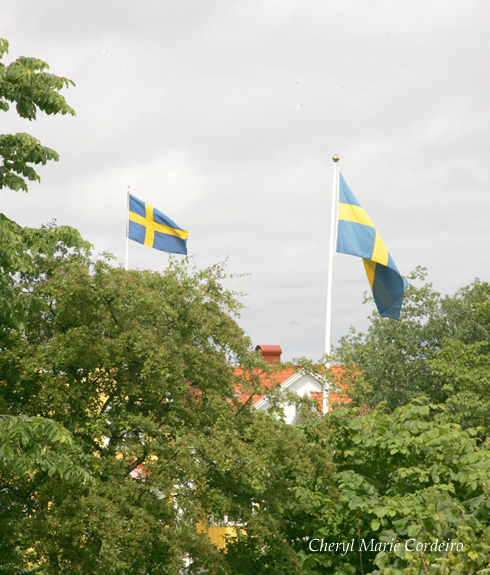
Swedish flags in celebration of Midsummer.
There were bouts of rain both before and after these pictures were taken, but I’m glad that the rain felt warm on the skin! I never understood how rain could be bitingly cold, almost painful, until I came to Sweden.
In Singapore, you have thick, clashing tropical thunderstorms and when the rain hits you, you’re covered in warm water from the equatorial sky. Rainstorms are almost delicious in the tropics!
As this is the celebration of the summer solstice, the days and nights during these days are long. And I’m all set to enjoy the festivities, preferably indoors this year!
Glad Midsommar to all!
